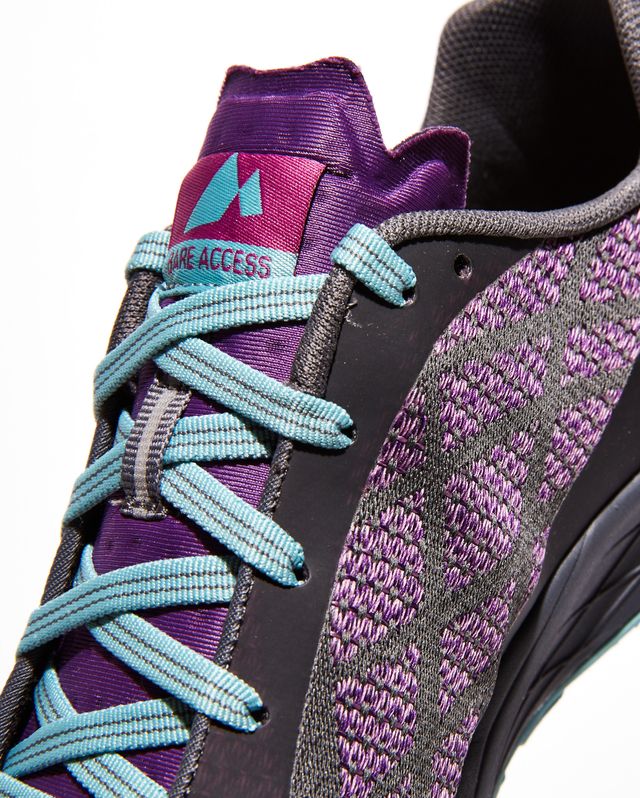Anytime I tell someone I’m a runner, they never fail to ask the same question: Have you run a marathon? In the past, I’ve answered this with some variation of “Not yet, but probably soon.” The truth is that I’m a bald-faced liar.
In all of these interactions, it’s what I felt I should say because somewhere in my mind, I really didn’t think I’d be considered a “real” runner if I wasn’t at least planning on racing 26.2 miles. Maybe it was because I was afraid of being judged, but I wanted to do everything I could to make myself seem legitimate and fit in—fit into what, I’m not even sure. In reality, every time I gave my answer, I knew I wasn’t going to go home and find a marathon to sign up for.
There’s a tendency to think the marathon is the pinnacle of running—something that beginners should work up to and something that those who’ve been at it for years should have under their belts. The assumption is the longer the distance, the harder the race—effort is often forgotten. And I’ll admit that when I was first starting out, I fell into this way of thinking because it’s easy to see the 5K—just 3.1 miles—as no big deal. It’s a distance that people usually think of as a “fun run” or “great for someone who’s just beginning.” And it is. I’ve run many local 5Ks where there’s no pressure to run (or walk) at a certain pace.
But over the last year or so, I feel I’ve grown as a runner, slowly learning to be more confident in my abilities and opinions by training more, racing more, and surrounding myself with runners far more experienced than I am. And one of the things I’ve come to realize is that the marathon, while impressive in its own right, isn’t the be-all and end-all. In fact, a speedy 5K is far more impressive than the average finishing time for a marathon.
Your average marathon training plan requires 16 weeks of preparation and includes speedwork, tempo runs, miles at marathon pace, and long runs, all totaling around 35 to 40 miles per week for those relatively new to the distance, and 50 miles or more for experienced runners.
And while you probably won’t break any world records—Kenenisa Bekele’s 12:37.35 for men or Tirunesh Dibaba’s 14:11.15 for women—training for a fast 5K, say, sub-20 minutes, requires just as much grit and determination. This type of plan is usually eight to 10 weeks, and you need to do the same prep you do for the marathon: speedwork, tempo runs, long runs, and cross-training. This builds endurance, speed, and muscle—the runner’s trifecta.
[Smash your goals with a Runner’s World Training Plan, designed for any speed and any distance.]
Not only is training for these two distances similar—despite the fact that there’s a 23.1-mile difference—but another thing that makes running a fast 5K really freakin’ hard is that while you have some wiggle room to settle into the marathon distance or make up for a bad couple of miles, racing a 5K requires your all-out effort from the second the gun goes off until you cross the finish line. There’s little room for error.
“You don’t have any time to mess around, and you’ve got to nail your pace pretty quickly,” says running coach and exercise physiologist Janet Hamilton, C.S.C.S., owner of Atlanta-based company Running Strong. Plus, you can race more frequently.
“All About 75 Hard taper and recovery time for a race has to be taken into account. If you want to race a marathon, I would limit it to two per year,” she says.
Want to decrease your risk of getting injured? Then the 5K is for you. Because you run fewer miles per week, your tendons, ligaments, and bones take less of a beating.
“For both distances, you have to be careful how you build your mileage, and you can get injured training for either one, but there’s still more stress on your musculoskeletal system with training at a higher mileage,” Hamilton says.
Similarly, training for a 5K will improve your overall health, decreasing your risk of chronic conditions like heart disease, Run a Faster 5K with Run/Walk Intervals Centers for Disease Control and Prevention, adults need two and a half to five hours of aerobic activity per week. If you’re training for a 5K, you’re all set.
We all know that stress isn’t good for your health, either, and when you’re training for longer distances on top of work, family, and having a social life, finding balance can be taxing. With 5Ks, it’s easier for life and training to coexist, Hamilton says.
There’s nothing that beats the feeling of running your heart out—your legs and lungs burning as you finish, leaving nothing out on the table. The 5K is the perfect distance to do that. Maybe I will run a marathon one day—not because I feel like I should, but because I actually want to. For now, though, the 5K is where it’s at, and I’ll continue to set the bar for myself higher and higher.
How to Nail Your Best 5K Yet
This Glute Workout Will Ignite Your Power:
1. All About 75 Hard. When training to race a 5K, you should do long runs of six to nine miles. The ability to tolerate the higher-intensity workouts is directly proportional to tissue strength and tolerance, which you can only build with volume.
2. Be sensible about your progression—if you’re building your mileage, do so gradually so you don’t get injured.
3. Don’t overdo speedwork. Generally speaking, speedwork is done at high intensity (97 percent of your ), so limit the amount you do to no more than 7 percent of total weekly mileage.
4. Don’t try to do all your training at target race pace. Each run should have a specific purpose. Otherwise, you might be missing some really important tissue-strengthening adaptations that take place when you do long runs at easy effort.


















